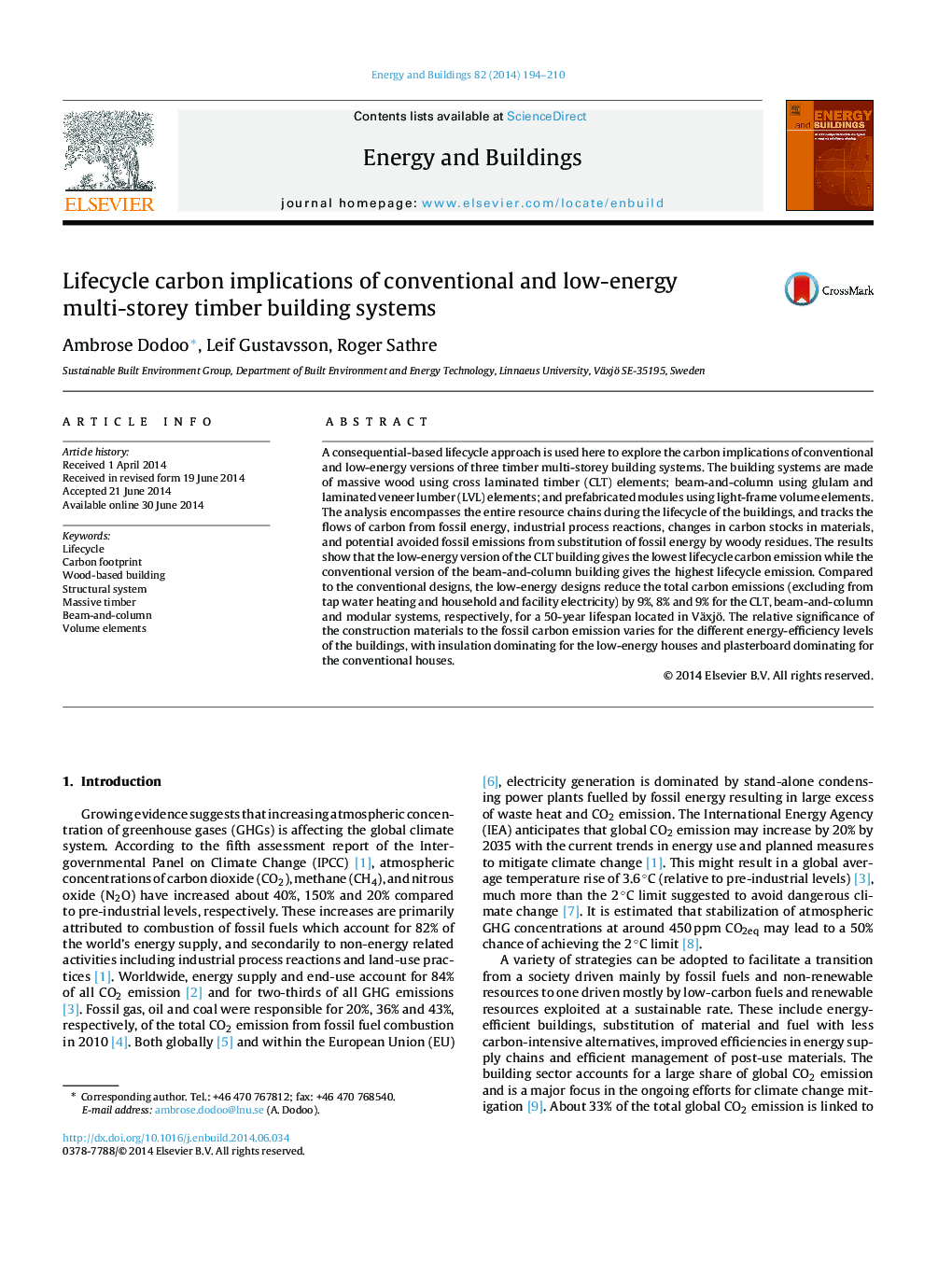| Article ID | Journal | Published Year | Pages | File Type |
|---|---|---|---|---|
| 262662 | Energy and Buildings | 2014 | 17 Pages |
•Lifecycle carbon implications of multi-storey timber building systems are analyzed.•The buildings have cross laminated timber (CLT), beam-and-column or modular structures.•Versions of the buildings designed as conventional or low-energy house are analyzed.•The CLT low-energy house results in the least lifecycle carbon emission.•The beam-and-column conventional house results in the most lifecycle emission.
A consequential-based lifecycle approach is used here to explore the carbon implications of conventional and low-energy versions of three timber multi-storey building systems. The building systems are made of massive wood using cross laminated timber (CLT) elements; beam-and-column using glulam and laminated veneer lumber (LVL) elements; and prefabricated modules using light-frame volume elements. The analysis encompasses the entire resource chains during the lifecycle of the buildings, and tracks the flows of carbon from fossil energy, industrial process reactions, changes in carbon stocks in materials, and potential avoided fossil emissions from substitution of fossil energy by woody residues. The results show that the low-energy version of the CLT building gives the lowest lifecycle carbon emission while the conventional version of the beam-and-column building gives the highest lifecycle emission. Compared to the conventional designs, the low-energy designs reduce the total carbon emissions (excluding from tap water heating and household and facility electricity) by 9%, 8% and 9% for the CLT, beam-and-column and modular systems, respectively, for a 50-year lifespan located in Växjö. The relative significance of the construction materials to the fossil carbon emission varies for the different energy-efficiency levels of the buildings, with insulation dominating for the low-energy houses and plasterboard dominating for the conventional houses.
